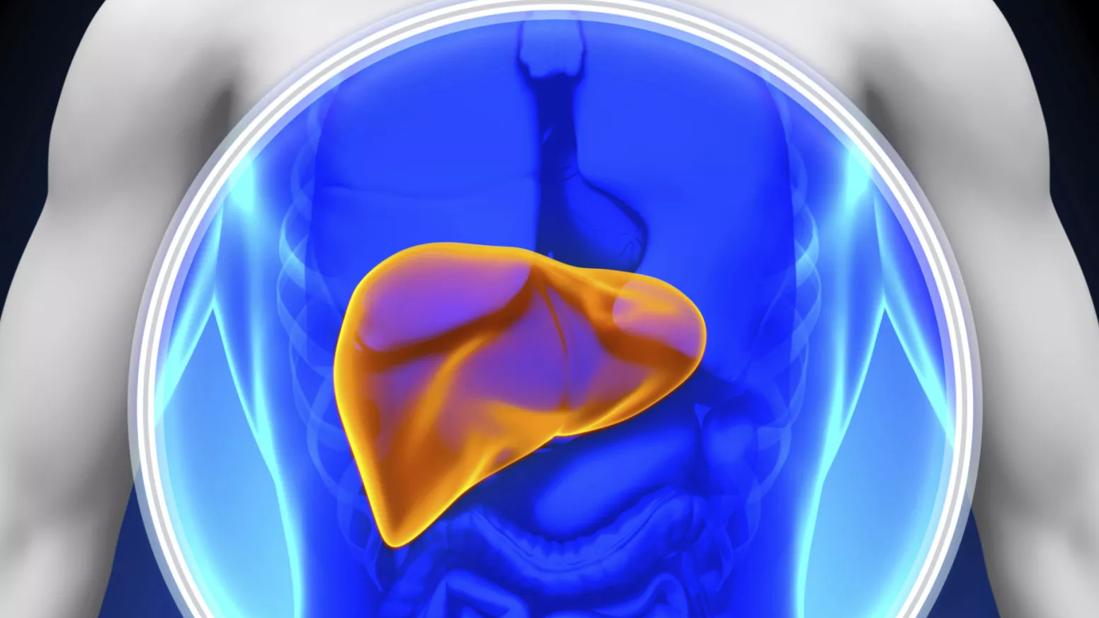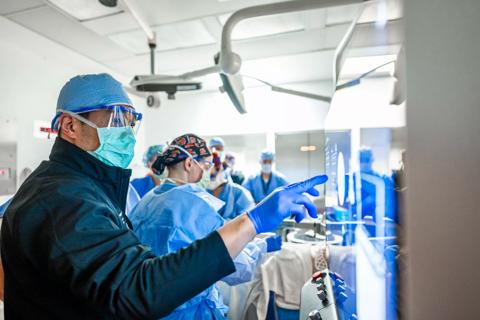Standardized and collaborative care improves liver transplantations

Multidisciplinary care expedites access to liver transplant providers and improves transplant rates in patients with advanced liver disease, according to data recently presented during the American Association for the Study of Liver Diseases conference.
Advertisement
Cleveland Clinic is a non-profit academic medical center. Advertising on our site helps support our mission. We do not endorse non-Cleveland Clinic products or services. Policy
Cleveland Clinic’s Medical Intensive Liver Unit (MILU), which opened in August 2018, is one of the few liver-specific intensive care units in the United States. It provides multidisciplinary care to critically ill patients with advanced liver disease, including those waiting or being evaluated for liver transplant.
“The goal is to provide standardized, evidence-driven management for patients with advanced liver disease and to promote opportunities for liver transplant,” says Christina Lindenmeyer, MD, Department of Gastroenterology, Hepatology & Nutrition, Cleveland Clinic. “Our experience demonstrates the benefits of the MILU’s unique clinical care pathways and supports the use of this care model nationwide.”
To better understand how the MILU’s multidisciplinary approach impacts care for patients with advanced liver disease, Dr. Lindenmeyer and colleagues initiated a study comparing patients admitted to the MILU with those who were admitted to the medical ICU before the establishment of the MILU.
The study authors defined pre-MILU patients as those with decompensated cirrhosis or acute liver failure identified by ICD-9 codes and confirmed by chart review. Patients were followed from admission to discharge, death or liver transplant. If they underwent transplant, they were followed for 12 months following the procedure.
Dr. Lindenmeyer and her team gathered MILU data from a prospectively maintained longitudinal registry. Electronic health records were used to retrospectively extract pre-MILU data. The researchers collected demographics, diagnosis, clinical and transplant data.
Advertisement
Enrolled patients included consecutive MILU patients who were admitted between August 2018 and May 2023 and patients admitted to the medical ICU between September 2017 and August 2018. Of the 1,366 MILU admissions, 1,011 patients were in the MILU cohort and 293 patients were in the pre-MILU group.
In both the pre-MILU and MILU cohorts, the most common liver disease etiology was alcohol-associated (42% versus 44%), according to the research findings. Dr. Lindenmeyer and colleagues found that prior to the creation of the MILU, only 37% of patients who met MILU criteria were seen by Hepatology in the ICU. Comparatively, the ICU and Transplant Hepatology teams co-managed 100% of MILU patients.
The researchers observed increased severity of liver disease stratified by the MELD-Na score in MILU patients versus their pre-MILU counterparts (26.35 vs 24.08). Additionally, findings showed that only five patients were bridged directly from the ICU to liver transplant in the 12 months prior to the implementation of the MILU. In contrast, in 2021 and 2022, 34 patients were successfully transplanted each year directly from the MILU, according to Dr. Lindenmeyer.
“As our program has grown, so have the number of transplants from MILU,” she says. “The multi-disciplinary approach in MILU is certainly driving our transplant program forward. Our care model has made it possible to optimize critically ill patients to the point that they can be acceptable candidates for transplantation. With coordinated interprofessional care, we are now able to bridge patients to transplant who, prior to the MILU, would have been considered too sick for transplant. And our patients are only surviving to transplant; they are also doing better after transplant than they were before we had the MILU.”
Advertisement
When looking at outcomes, Dr. Lindenmeyer reports an improved 1-year post-liver transplant survival among patients in the MILU compared with those who received care prior to the MILU’s inception (93.3% vs. 80%).
“For patients that you’re pouring enormous resources into, this is very meaningful,” she emphasizes. “Through this multidisciplinary effort, we are collaborating every day to support our critically ill patients and identify early opportunities for transplant. We are transplanting more patients and improving outcomes on the other side of the MILU and the operating room. This is a model of care we believe is important, and that we would like to see instituted throughout the country.”
Caring for critically ill patients with advanced liver disease comes with a variety of challenges. Cleveland Clinic’s MILU was created to address the unique needs of this patient population and optimize their care through interprofessional collaboration.
The MILU is a co-managed unit that involves a team of intensivists and liver specialists. “We meet in our huddle and review every patient case with a multidisciplinary team that includes hepatology, intensive care, transplant nurse coordinators, a representative from the liver transplant surgical team, nutrition, pharmacy, physical therapy, and trainees,” explains Dr. Lindenmeyer.
During this time, the team also identifies patients coming from outside hospitals to ensure they are placed in the right unit with the necessary resources. This minimizes delays of care, which is especially important for patients who need urgent liver transplant, according to Dr. Lindenmeyer. This multidisciplinary approach helps prioritize patient needs and ensures smooth transitions between units.
Advertisement
“The hepatology and ICU teams conduct bedside rounds together” Dr. Lindenmeyer notes. “ This is very helpful not only for patient care, but it is also important for family communication. They are able to see the two teams come together as one.
“Care at the hospital can be very fragmented and it can be confusing for patients and families to have the teams round separately,” she adds. “In the MILU, our teams come together as one to have the tough discussions about transplant or about transitioning goals of care to a more palliative approach. It is helpful to patients and families to have a uniform message and a united team.”
Additionally, transplant selection committees occur every week and the intensive care team will also participate, explains Dr. Lindenmeyer. “Our MILU team provides a critical perspective for the liver transplant selection committee,” she says. “The more communication, the more collaboration, and the more education that we’re providing, the better.”
The Cleveland Clinic team is committed to the MILU’s ongoing growth and improvement, including their continued research efforts to better understand the impact of multidisciplinary care and education.
“We are always learning from what we have done and aiming for continuous improvement,” says Dr. Lindenmeyer. “We are working to create protocols to teach other institutions how to successfully build their own MILU. Other plans include the development of a consensus among liver intensivists regarding best practices for liver ICUs.”
Advertisement
In addition to the clinical benefits associated with a medical intensive liver unit, it also provides opportunities for innovation. “We are very excited to welcome new clinical trials,” notes Dr. Lindenmeyer.
“Our team is very passionate about providing the best possible care to these critically ill patients and facilitating access to innovative therapies that can improve their outcomes and quality of life,” she concludes.
Advertisement

Study reveals key differences between antibiotics, but treatment decisions should still consider patient factors

Findings could help clinicians make more informed decisions about medication recommendations

The SPECCIAL study is the first to examine long-term clinical outcomes

Findings also indicate reduced risk of serious liver events

Findings are first to provide underlying explanation, linking the diagnosis to high-immune activation and worse clinical outcomes

Histotripsy is noninvasive and may generate abscopal effect

IBAT inhibitors, elastography and more

New device offers greater tumor control for malignant liver lesions